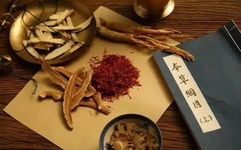
Fundamentals of Traditional Chinese Medicine Health Education
1. Basic Knowledge of Traditional Chinese Medicine (TCM)
(1) Understanding of Life in TCM.
This section introduces the TCM perspective on life, which views human life as a phenomenon of nature, emphasizing that growth, aging, and death are natural processes.
(2) Understanding the Relationship between Humans, Nature, and Society in TCM.
This section discusses the holistic view of TCM, which posits that the movements and changes in nature are closely interconnected with human beings.
(3) Understanding Health in TCM.
This section introduces the TCM concepts of harmony between humans and nature, unity of body and spirit, interrelation of organs, and balance of Yin and Yang; it also discusses a healthy lifestyle that includes moderation in diet, regular routines, avoiding excessive labor, maintaining tranquility, and protecting against external pathogens.
(4) Understanding Disease in TCM.
This section covers TCM’s understanding of the causes and pathological changes of diseases, the relationship between disease, syndrome, and symptoms, and the basic methods and characteristics of TCM disease analysis.
(5) Diagnostic and Treatment Methods in TCM.
This section introduces TCM’s unique diagnostic methods, including observation, listening, inquiry, and pulse-taking (望闻问切), as well as the principles and methods of TCM treatment, the concept of preventing disease, and various TCM methods for health maintenance and disease prevention, such as acupuncture, tui na (Chinese therapeutic massage), cupping, foot baths, gua sha (scraping therapy), and medicinal pastes, with a focus on their usage, applicable scope, and precautions. It also discusses TCM’s understanding of body constitution and methods for identifying different constitutions (e.g., balanced, Yang deficiency, Yin deficiency, Qi deficiency, phlegm-dampness, damp-heat, blood stasis, Qi stagnation, and special constitutions) along with corresponding daily health maintenance methods.
2. Concepts and Methods of Health Maintenance in TCM
(1) Concepts and Basic Principles of TCM Health Maintenance.
This section introduces the TCM principles of aligning with nature and maintaining Yin-Yang balance.
(2) Common Methods of TCM Health Maintenance.
This section discusses common TCM health maintenance methods, such as seasonal health practices, emotional health, dietary health, exercise health, and acupoint health.
1. Seasonal Health: This section introduces TCM health practices that correspond to the seasonal changes of spring, summer, autumn, and winter.
2. Emotional Health: This section discusses TCM’s understanding of emotional activities and their relationship with the organs, as well as methods for emotional regulation.
3. Dietary Health: This section introduces common dietary health practices in TCM, emphasizing the importance of a correct dietary philosophy and suitable dietary methods, particularly those that are appropriate for the individual.
4. Exercise Health: This section discusses TCM’s understanding of exercise health and the concept of combining movement and stillness; it introduces common exercise methods such as Tai Chi, Ba Duan Jin (Eight Pieces of Brocade), Wu Qin Xi (Five Animal Frolics), and Liu Zi Jue (Six Sounds), detailing their characteristics, effects, operational essentials, and precautions.
5. Acupoint Health: This section introduces TCM’s understanding of meridians and their functions in the body; it discusses common acupoints, their locations, health benefits, pressing techniques, and precautions.
6. Other Health Practices: This section introduces TCM methods related to daily living, sexual health, and Qigong.
3. TCM Prevention and Health Maintenance for Common Diseases
This section focuses on TCM’s understanding and preventive health methods for common and frequently occurring diseases such as coronary heart disease, hypertension, hyperlipidemia, diabetes, malignant tumors, chronic bronchitis, asthma, tuberculosis, hepatitis, rheumatoid arthritis, cervical spondylosis, osteoporosis, influenza, insomnia, and constipation.
4. TCM Health Maintenance for Key Populations
(1) Characteristics of the Elderly and TCM Health Maintenance.
This section discusses TCM’s understanding of the physiological and pathological characteristics of the elderly, focusing on health maintenance methods and preventive health practices for common diseases in older adults (especially those over 65 years old).
(2) Characteristics of Women and TCM Health Maintenance.
This section discusses TCM’s understanding of the physiological and pathological characteristics of women, focusing on health maintenance methods and preventive health practices for common diseases at various physiological stages, including those for pregnant and postpartum women.
(3) Characteristics of Children and TCM Health Maintenance.
This section discusses TCM’s understanding of the physiological and pathological characteristics of children, focusing on health maintenance methods and preventive health practices for common diseases in children (especially those aged 0-3 years).
5. Common Knowledge of TCM
(1) General Knowledge.
This section introduces the basic characteristics of TCM in diagnosing and treating diseases, as well as important considerations when seeking TCM treatment.
(2) Knowledge of Chinese Herbs.
This section introduces the basic knowledge of Chinese herbs, including preparation methods and purposes (such as reducing toxicity and enhancing efficacy), simple processing methods, decoction methods, precautions for taking Chinese herbs, and identification knowledge of commonly used herbs.
(3) Commonly Used Chinese Patent Medicines at Home
This section introduces the indications, effects, and usage of commonly kept Chinese patent medicines, along with precautions and contraindications.
(4) Emergency Knowledge
This section introduces knowledge and skills for emergency responses using TCM during public health emergencies, natural disasters, disease outbreaks, and family first aid.
Source: National Administration of Traditional Chinese Medicine
………………………………


